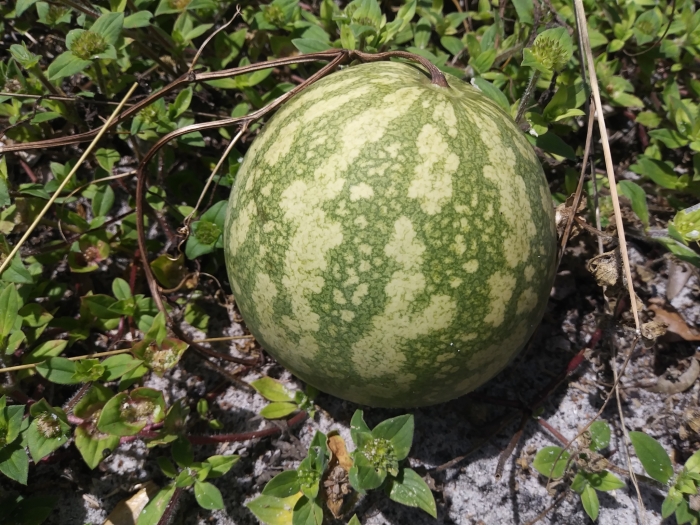Watermelon
(Citrullus lanatus)
Watermelon (Citrullus lanatus)
/
/

Daniel Estabrooks
Public Domain











































































Estimated Native Range
Summary
Watermelon is valued for its refreshing fruit, especially in hot climates, and is a staple of summer diets. It is also used in culinary applications, including salads, juices, and as a natural sweetener. In cultivation, watermelon requires a long growing season with high temperatures, ideally over 25 °C (77 °F). It thrives in full sun and needs well-drained sandy loam soil with a pH between 5.5 and 7. The plant is typically grown from seeds sown in pots under cover and transplanted outdoors. Watermelon can be susceptible to pests and diseases such as aphids, cucumber beetles, and fungal infections like powdery mildew. It is important to monitor for these issues to ensure a healthy crop.CC BY-SA 4.0
Plant Description
- Plant Type: Vine, Herb
- Height: 0.8-1.5 feet
- Width: 10-15 feet
- Growth Rate: Moderate
- Flower Color: Yellow
- Flowering Season: Summer
- Leaf Retention:
Growth Requirements
- Sun: Full Sun
- Water: Medium
- Drainage: Medium
Common Uses
Bee Garden, Drought Tolerant, Edible*Disclaimer: Easyscape's listed plant edibility is for informational use. Always verify the safety and proper identification of any plant before consumption.
Natural Habitat
Originally from the Kalahari Desert of southern Africa and other semi-arid regions
Other Names
Common Names: Wild Watermelon, Afghan-Melon, Bastard-Melon, Dessert Watermelon, Wassermelone, Sandía, Albudeca, Melon D’Eau, Pastèque, Anguria
Scientific Names: , Citrullus lanatus, Colocynthis citrullus, Citrullus vulgaris, Momordica lanata, Citrullus lanatus subsp. vulgaris, Citrullus aedulis, Cucumis citrullus, Citrullus battich, Cucurbita citrullus
GBIF Accepted Name: Citrullus lanatus (Thunb.) Matsum. & Nakai